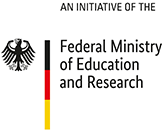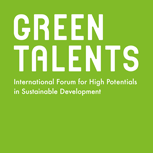PhD Student at Institute of Biofunctional Polymer Materials at Leibniz Institute for Polymer Research Dresden, Germany
Research focus: feasibility of using bio-responsive antimicrobial coatings for water purification in developing countries
Melissa is one of the very few chemical engineers in Southern Africa who is trained in biomimicry and has held multiple research positions over the last few years. She aims to link scientific solutions to societal innovations.
Her ultimate goal is to use biophilic design to create functional and simple, socio-technological interventions that improve how people and communities function.
2018 3rd Place Award Marie-Curie Falling Walls Lab
2016 Director and Co-founder of Asili Pty Ltd. Biophillic Systems Design
2015 Generation of water recycling model for the restoration of ecological function of hydrological cycles in urban cities for developing economies
CV as submitted for the Green Talents award (2014):
University of Cape Town, South Africa
Research focus: nutrient and energy recovery from sewage: technology review and exploration of possibilities in South Africa
By bringing a biomimetic approach to Chemical Engineering in wastewater solutions, Melissa Sikosana is taking an interdisciplinary approach to the search for a sustainable solution to wastewater nutrient recovery in South Africa.
At only 26, Melissa’s academic record is already very distinguished. Now in her final year of an MSc degree in Chemical Engineering, she has held multiple research positions and is one of the very few chemical engineers in Southern Africa who is also trained in biomimicry. Her current research focus is on how to apply wastewater solutions developed across the world to a South African context. Not only do these new methods allow for the recovery of clean water – a vital and scarce resource – but also for the recovery of important nutrients. “Wastewater is increasingly viewed as a ‘water-carried waste’, presenting opportunities for the recovery of nutrients and energy, as well as water”, explains Melissa. One of the most important nutrients found in wastewater, or “sewage-borne resources”, is phosphorus. This nutrient is known to help the growth of plants and could therefore play a central role in ensuring universal food security.
Leading a team of researchers, Melissa has investigated the conceptual design for two treatment plants and the techno-economic pre-feasibility assessment for the case of a central city precinct in South Africa. The initial results were encouraging: though four times higher than the outmoded disposal options, the cost of the new, nutrient-recovering method over a 20-year period is still “well within the envelope for standard treatment”. However, applying a qualitative approach to her research and interviewing scientific and non-scientific experts, Melissa has found that much of South African society is not culturally ready for fertiliser nutrients recovered from human waste - but may be open to its uses in contexts other than fertilisation. As “the social acceptance of these innovations plays a major role in their potential implementation and success”, Melissa and her team are now searching for the right approach to encourage the acceptance of sustainable solutions. “Sustainable solutions inspired by nature lie within communities themselves and the real challenge in Africa is aligning these solutions in terms of health, safety and functionality”, explains Melissa.
The jury was impressed by Melissa’s early achievements and her ongoing efforts to link scientific solutions to societal innovations.






